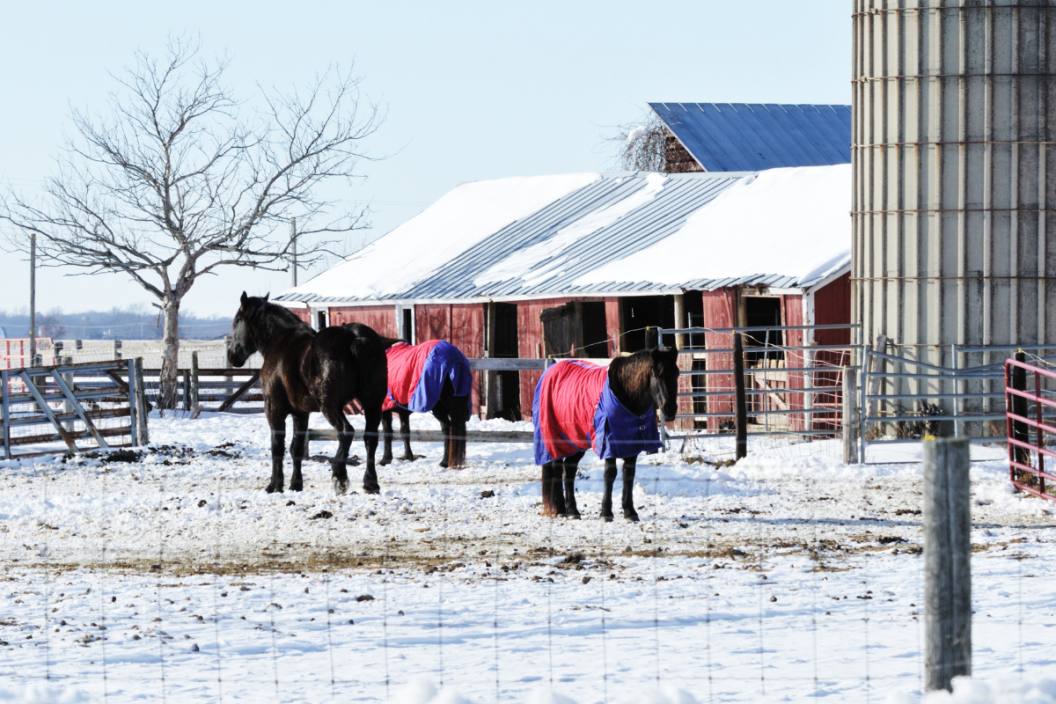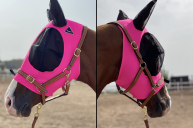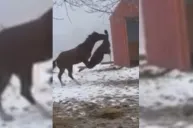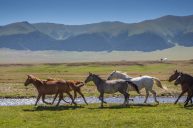Horses have multiple blanket options depending on the season. But why do horses need blankets?
Horse owners often keep a selection of blankets readily available for their horses — Lightweight blankets for when the weather is mildly cool and a denser blanket for when the weather turns cold and snowy. Horse blankets tend to be a bit of a controversial issue depending. Particularly for horses in winter, their coat and the layer of fat underneath are sufficient to keep a healthy adult horse warm. However, at what point do horses need to have blankets?
How To Use a Horse Blanket
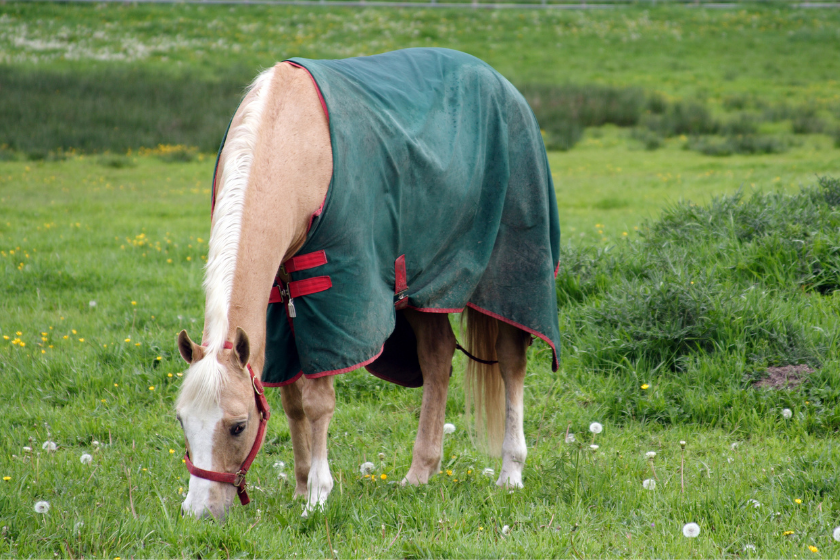
According to Total Equine Vets, a blanket is most useful when used properly. The first thing horse owners need to ensure is that the blanket fits their horse. You do not want it to put pressure on your horse's chest, shoulders, or withers. If your horse's hair is clipped, they may get rub marks near their shoulders, so adding a slick undergarment will help prevent any rubbing. The blanket can also be sprayed with silicone grooming spray. Another way to prevent rubs is to remove the blanket often. As horses are not meant to wear their blankets 24/7. Removing it allows you to look for rain rot and sores.
Use a turnout blanket when your horse is let out into the pasture. These blankets will actually stay in place while your horse is running around or rolling in the grass. In addition, turnout blankets are waterproof and sturdy. Stable blankets are usually not waterproof and can trip up your horse since they are not designed for leaving the stall.
Make sure you get the size right, too! Even if you have a heavyweight blanket that is too small, it will not keep your horse warm enough, and it can cause sores to pop up on your horse's back. Also, it will not protect them from the cold weather if the blanket is too large.
When To Blanket A Horse
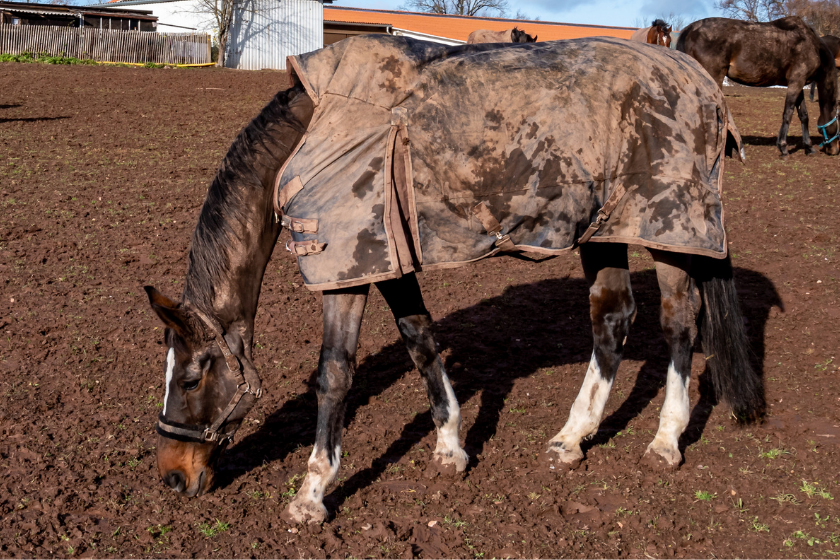
RELATED: These Horse Cooling Blankets Are Great for Post-Exercise Recovery
Horses do not need to have blankets on their backs all of the time. In fact, a healthy horse can handle temperatures as low as 5 degrees Fahrenheit before their body temperature starts to drop to dangerous levels. However, weather conditions can affect how warm your horse stays, which leads to them needing a blanket.
According to Total Equine Vets, rain can stop the undercoat from keeping your horse warm, while wind will blow it away from the skin. Snow actually is the least of a horse owner's worries. As snow lands on your horse's coat, it provides a nice insulating layer, keeping a horse's natural warmth in.
You do not need to put a blanket on your horse if:
- They have a thick winter coat
- Your horse is healthy with a good bodyweight score
- There is no wind or rain
- The outside temperature is higher than 5 degrees
Use a blanket for your horse if:
- Their coat has been clipped
- They are sick or injured
- Your horse has a low body weight
- The horse is older and has a hard time keeping weight on or has a difficult time moving
- Acclimating to a new climate (Takes between 10-21 days)
- It is rainy or windy (or both!)
- No shelter
If you need some more specific guidelines for horse care, give them a blanket at 60 degrees or below if your horse has been clipped. If they have a moderate hair coat, put a blanket on at 40 degrees or below. For heavy hair coat horses, give them a blanket when the temperature dips below 30 degrees. It's important to make sure you are not over blanketing either. If your horse becomes sweaty, they will start to become colder. Always stick your hand underneath the blanket to ensure that they are not too warm, and you should never see any sweat marks when the blanket comes off of your horse's back.
According to Colorado State University, you should also make sure the horse blankets are regularly cleaned and cared for in the stable. Blankets should be line-dried, so having multiple winter horse blankets in your stable supplies is a plus. When you are hanging your blankets up to dry, make sure you give them once over to ensure all the buckles and attachments are secure. When they are done drying, you can store them in totes or on a shelf with the rest of your tack. Some horse owners have a corner of their barns dedicated to storing horse hoods, halters, stirrups, saddle pads, headstalls, and bridles. It's also a great spot to store your vests and saddles.
Types of Blankets
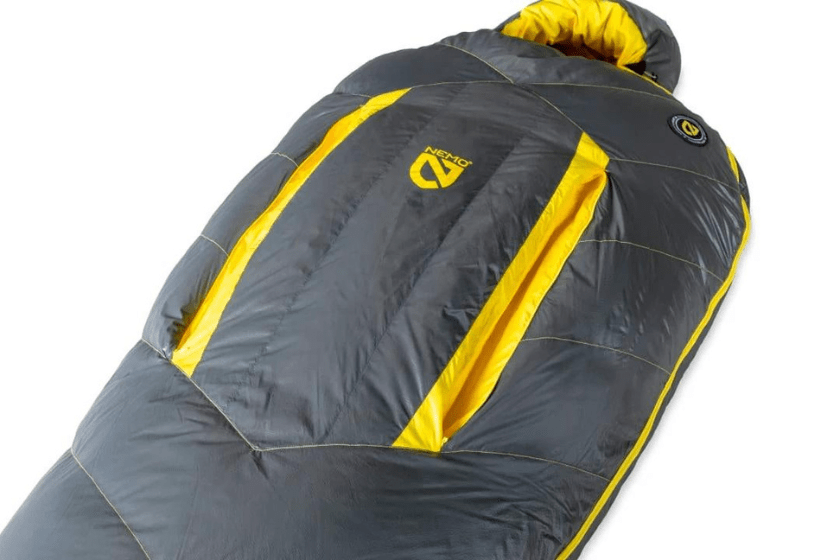
There are many types of horse blankets that your can use for your four-legged friend. The type used depends on whether they are in the pasture, trailer, or stall and, of course, the weather.
Rain sheet: Also known as a horse sheet. This blanket is lightweight and thin. They are also waterproof, offering protection against the wet weather while your horse is in the pasture. A rain sheet can be placed on top of a liner or stable sheet for extra warmth if it is very cold outside.
Stable sheet: This one is a fitted blanket that is usually made of breathable cotton or knit acrylic. It is designed to wick sweat away from your horse's body, keeping them warm and dry, especially after they exercise or train. It also keeps them clean and dust-free.
Turnout sheet: A blanket that provides waterproof coverage for your horse while still being breathable.
Pony blanket: Smaller-sized blankets for ponies and foals. They come in all weights and styles.
Medium weight blanket: A medium blanket generally has about 180-200 grams of fill and is best for temperatures between 20-30 degrees Fahrenheit. Some styles even come with an attached hood for extra protection for your horse's neck.
Horse Cooler: These blankets are usually made of fleece, wool, mesh, or cotton. They are used to wick moisture away from your horse's skin and assist with drying out after exercise or bath time. When the temperature turns frigid, the fleece and wool can also be used as liners.
Fly Sheets: Fly sheets, fly masks, and fly boots are all used to keep your horse safe and comfortable when flies and other bugs attack. The sheets are made of breathable open mesh material that is infused with bug repellant, ensuring your horse has an enjoyable turnout experience. The sheet also protects from the sun. They also have a high neck for added protection.
Some types of blankets come with high necks or a combo neck for added protection. A neck cover can give extra warmth and protection when it is very cold outside. Ripstop denier blankets are generally sturdier and are capable of withstanding damage from tree branches and shrubs. A couple of popular horse brands are Weatherbeeta, Horseware, Kensington, Rhino, Amigo, Shires, and Rambo.
What kind do you use? Tell us on our Wide Open Pets Facebook page!
